The Truth About Rusty Wedges
We attempt to determine if a raw rusty wedge offers any extra performance
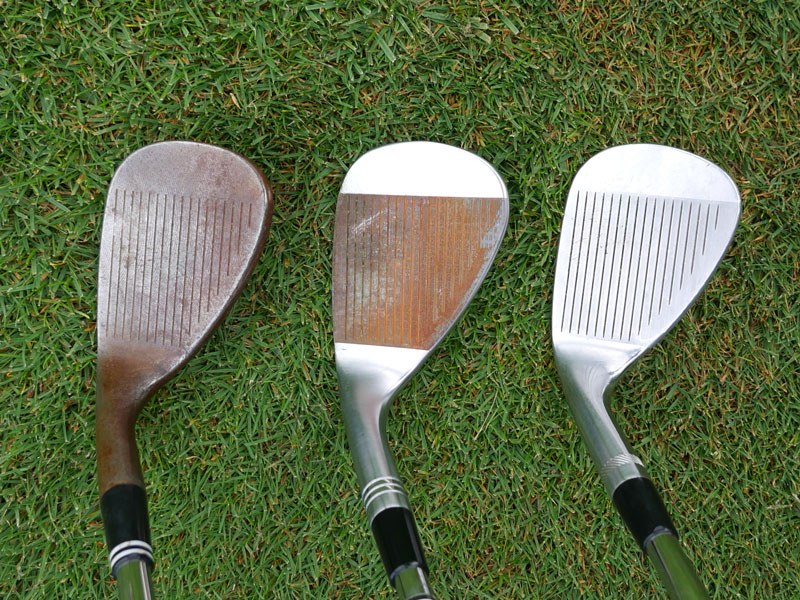

The Truth About Rusty Wedges - We attempt to determine if a raw rusty wedge offers any improvement in performance compared to a new and plated wedge
The Truth About Rusty Wedges
Raw wedges that go rusty over time are making a bit of a comeback in the latter part of 2019, thrust back into the limelight with the launch of the TaylorMade Milled Grind 2 wedge. It features a patented Raw Face design whereby the face will oxidise and go rusty over time, supposedly producing a number of feel and performance benefits.
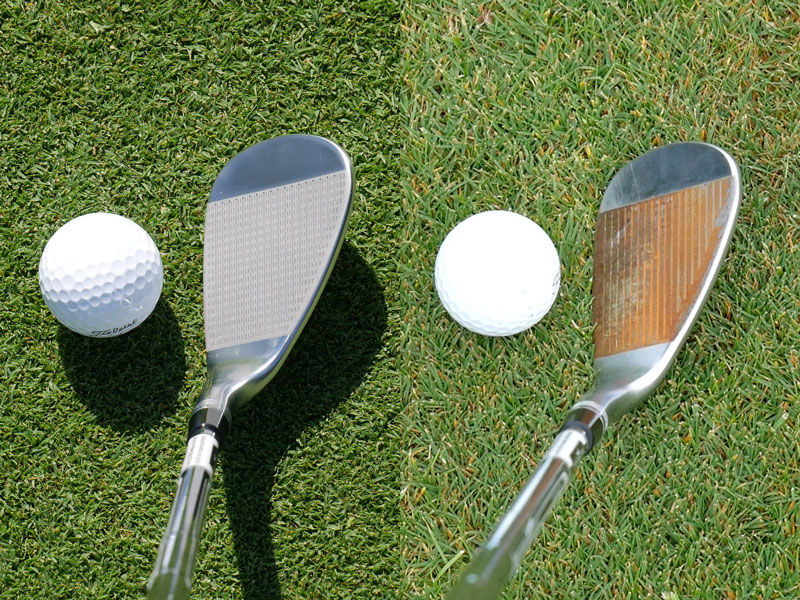
TaylorMade says, and it has been a commonly held theory for a while, that raw wedges that go rusty will spin more and feel softer over time. They should also reduce sun glare and preserve the geometry of the grooves for longer-lasting spin.
But is this really the case? We wanted to find out, so we tested the TaylorMade Milled Grind 2 wedge on the Foresight Sports GCQuad launch monitor as soon as we peeled the preserving sticker off. We then soaked it in water, letting it go really rusty, and tested it again the next day.
It’s worth pointing out that all wedges are raw but to keep them looking pristine on the shelf, the manufacturers add an extra finish to maintain durability, usually satin chrome. This the case for all the other parts of the head on the MG2 wedge, which won’t rust.
You can see that the launch monitor told us that backspin actually reduced when the face was rusty on both a 50-yard pitch shot and the full shot with the TaylorMade Milled Grind 2 wedge.
Get the Golf Monthly Newsletter
Subscribe to the Golf Monthly newsletter to stay up to date with all the latest tour news, equipment news, reviews, head-to-heads and buyer’s guides from our team of experienced experts.

To further try and prove or disprove the theory, we also tested an older raw Cleveland RTX-3 wedge, which had gone really rusty, up against a used and brand new plated Vokey SM7 wedge, to see if there were any differences in launch and spin of note.
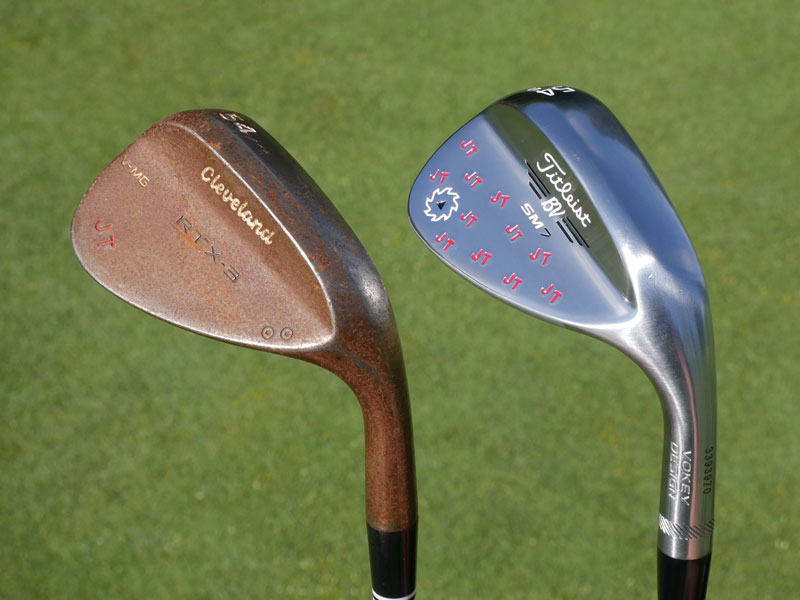
There was a theme from the GCQuad data that rusty wedges, when tested against new faces and plated faces, launched higher and spun less. Launch is a good indicator of friction from the face, the more friction there is the lower the ball should launch.
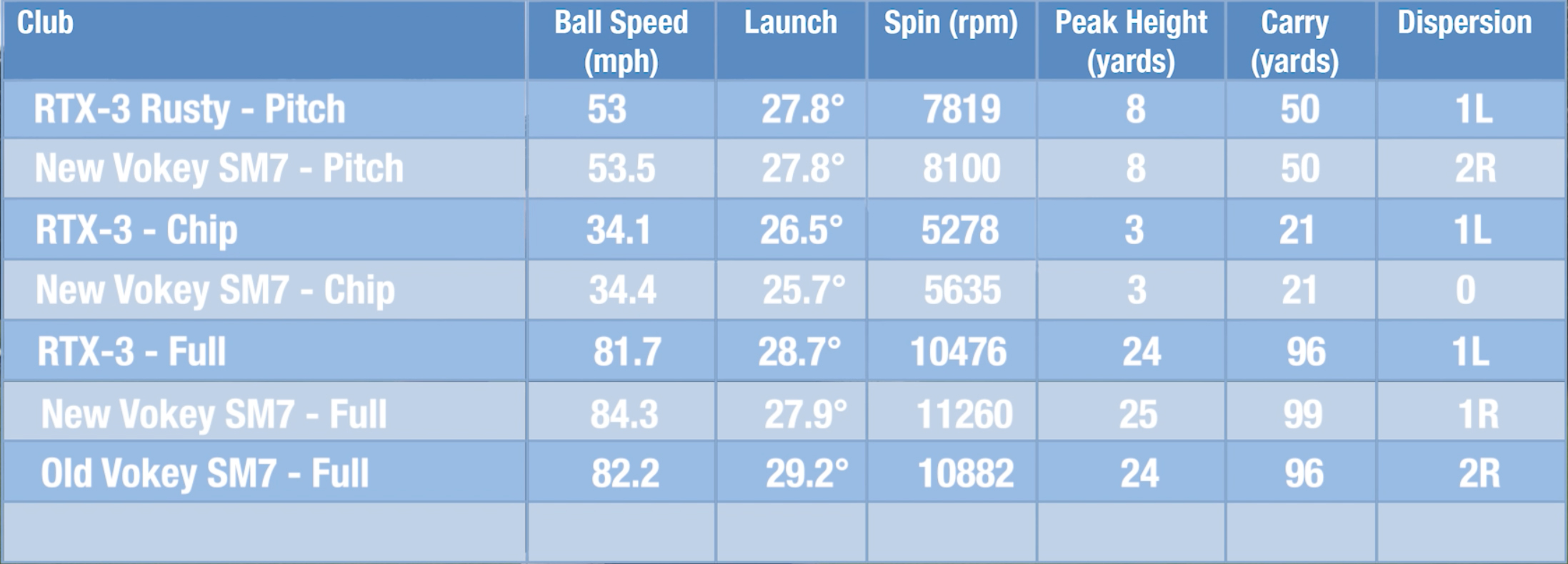
I then took all the wedges out on the course to assess performance of different lengths of shot and was surprised to see some shots with the rusty MG2 check up a little more than shots with the new and used plated wedges.
Therefore it is with some regret that my conclusion from this test is inconclusive. I can’t say for sure if rusty wedges produce more spin than non rusty or plated wedges. The GCQuad launch monitor suggested that rusty wedges actually spin less on all lengths of shot, yet out on the course there were some shots that seemed to spin more.
The problem being there are an awful lot of variables in play. Even on the launch monitor, clubhead delivery will vary from club to club, shot to shot. Then out on the course, you’ve got the extra factors of moisture, dirt and grass getting in the way of the contact between club and ball.
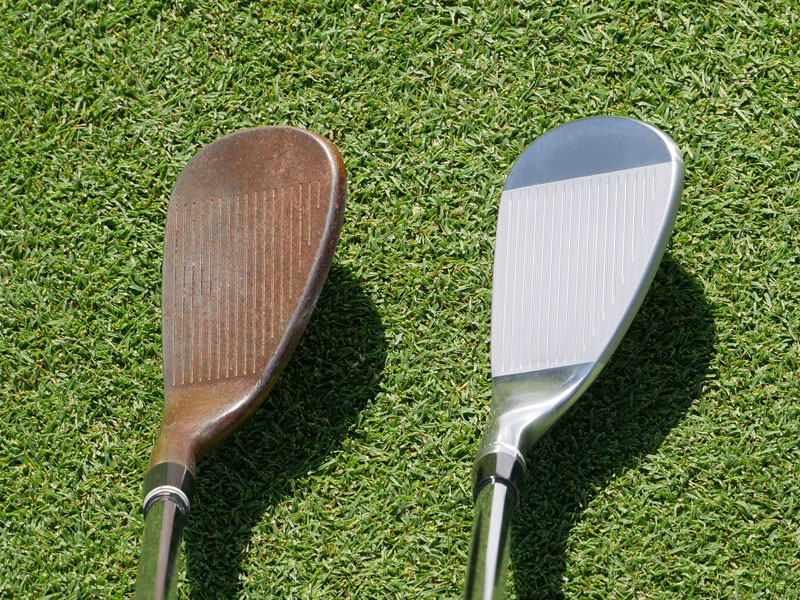
So while performance is less clear cut, the look of a rusty wedge is something everyone will have an opinion on.
Personally, I like my wedges to look as close to how they did when they were new for as long as possible. A rusty wedge to me looks tired, older than it is and almost like whatever technology is on the face has worn away. If I spend £150 on a wedge, I want it to look like it. A rusty wedge may also have a lower resale value too.
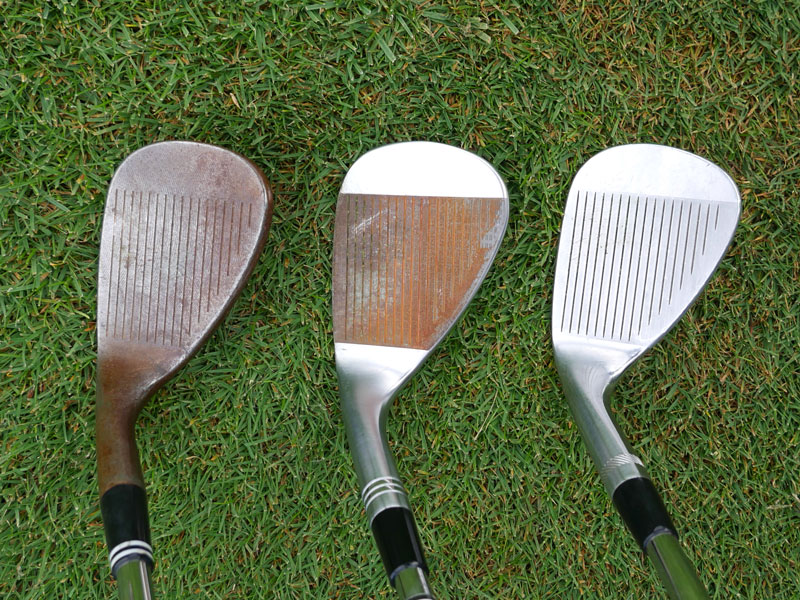
That said, raw rusty wedges do have some cosmetic advantages. The rusty face definitely reduces glare from the sun and also shows up your strike pattern. A central wearing of the rust, with the raw metal coming through underneath, provides a point of focus over the ball and encouragement that your ball striking is on point, while a wearing away in the heel or toe suggests you need to address some club delivery issues.
In terms of feel, it was nigh-on impossible to detect any differences in the sound or feel between raw rusty wedges or plated wedges but if I had to get off the fence, I'd say raw rusty wedges felt a tad softer.
Apologies this test couldn’t be more conclusive. My sign off would be to try both and see which one you prefer the look, feel and performance of the best. Ultimately wedges are your scoring clubs and you need to feel comfortable with them in your hand, whether that’s ones that are rusty or ones that aren’t.

Joel has worked in the golf industry for over 15 years covering both instruction and more recently equipment. He now oversees all equipment and video content at Golf Monthly, managing a team of talented and passionate writers and presenters in delivering the most thorough and accurate reviews, buying advice, comparisons and deals to help the reader or viewer find exactly what they are looking for.
One of his career highlights came when covering the 2012 Masters he got to play the sacred Augusta National course on the Monday after the tournament concluded, shooting a respectable 86 with just one par and four birdies. To date, his best ever round of golf is a 5-under 67 back in 2011. He currently plays his golf at Burghley Park Golf Club in Stamford, Lincs, with a handicap index of 3.1.
Joel's current What's In The Bag?
Driver: Titleist GT3, 9°, Fujikura Ventus Black 6 S shaft.
Fairway wood: Titleist TSR3, 15°
Hybrid: Titleist TSi2, 18°
Irons: Titleist T150, 4-PW
Wedges: Titleist Vokey SM10, 50°, 54° and 58°
Putter: LAB Golf DF3
Ball: 2025 Titleist Pro V1x
-
 What Golf Shoes Is Justin Rose Wearing At The Masters?
What Golf Shoes Is Justin Rose Wearing At The Masters?The Englishman has been seen wearing a number of shoes throughout his career and, at the start of 2025, Rose has been spotted donning footwear from PAYNTR Golf
By Matt Cradock Published
-
 I Am So Fed Up With The Masters Television Coverage... Why Can't We Watch A Full Day's Play?
I Am So Fed Up With The Masters Television Coverage... Why Can't We Watch A Full Day's Play?The strict television rules around The Masters at Augusta National are really starting to bug me, especially in this modern era of mass sports consumption...
By Barry Plummer Published